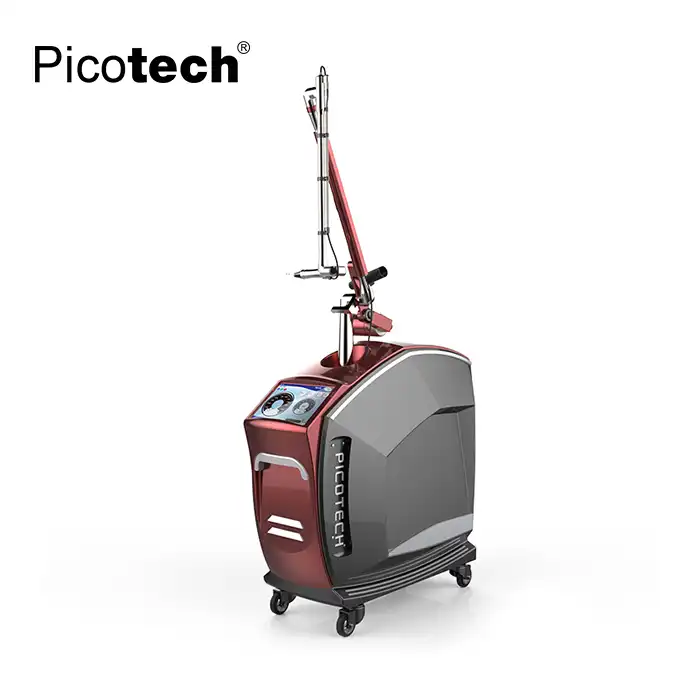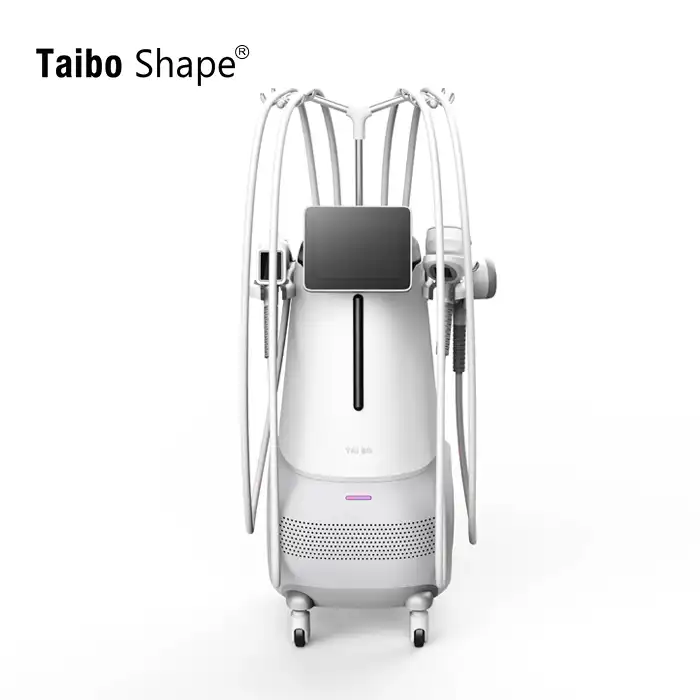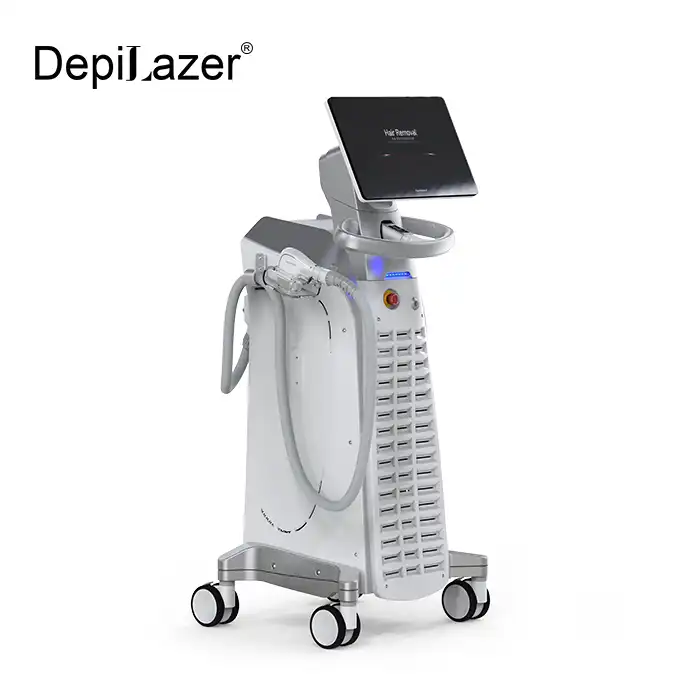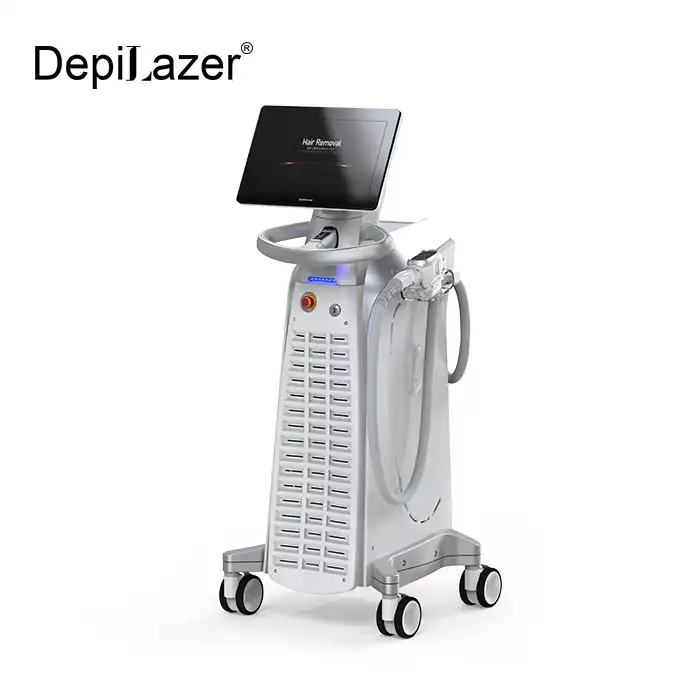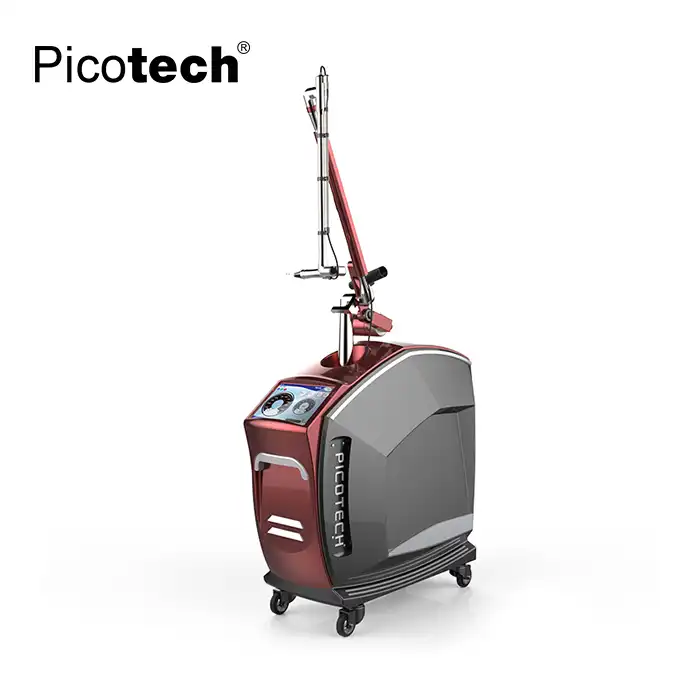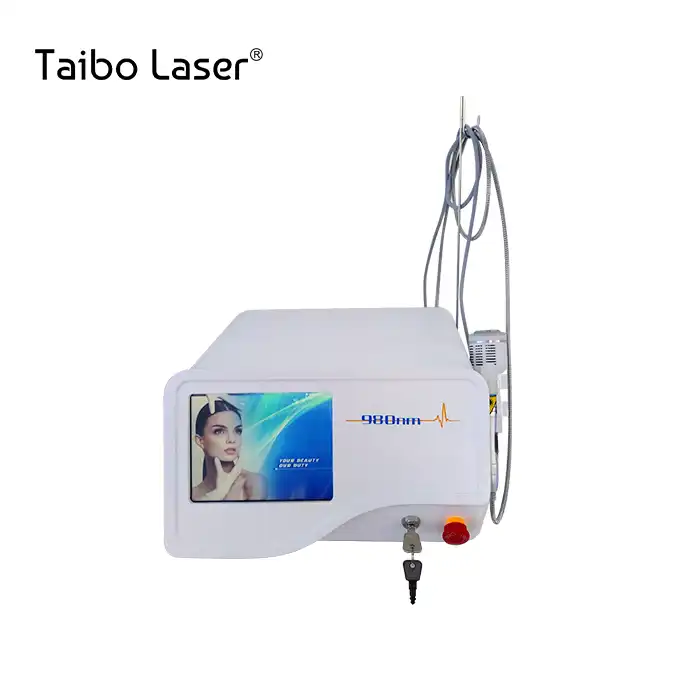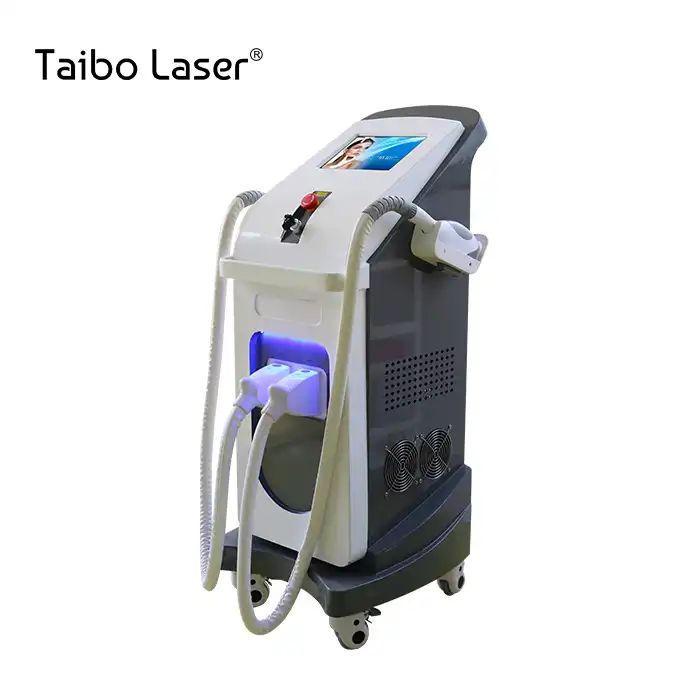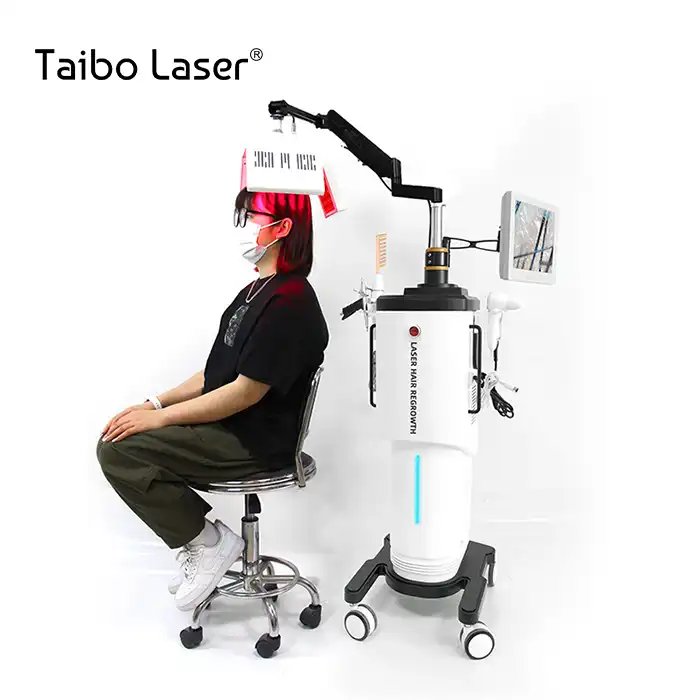
What are the differences between Nd and Er lasers?
2025-03-20 15:34:09
Understanding the differences between Nd (Neodymium) and Er (Erbium) lasers is essential for professionals in the aesthetic and medical fields. Both lasers, including the popular nd yag q switch laser machine, are used in treatments like tattoo removal and skin resurfacing. Nd lasers, operating at 1064 nm or 532 nm, target pigmented lesions and tattoo ink, while Er lasers, with a wavelength of 2940 nm, are absorbed by water in the skin, making them ideal for precise ablation and skin resurfacing. These wavelength differences define their unique applications and effectiveness.
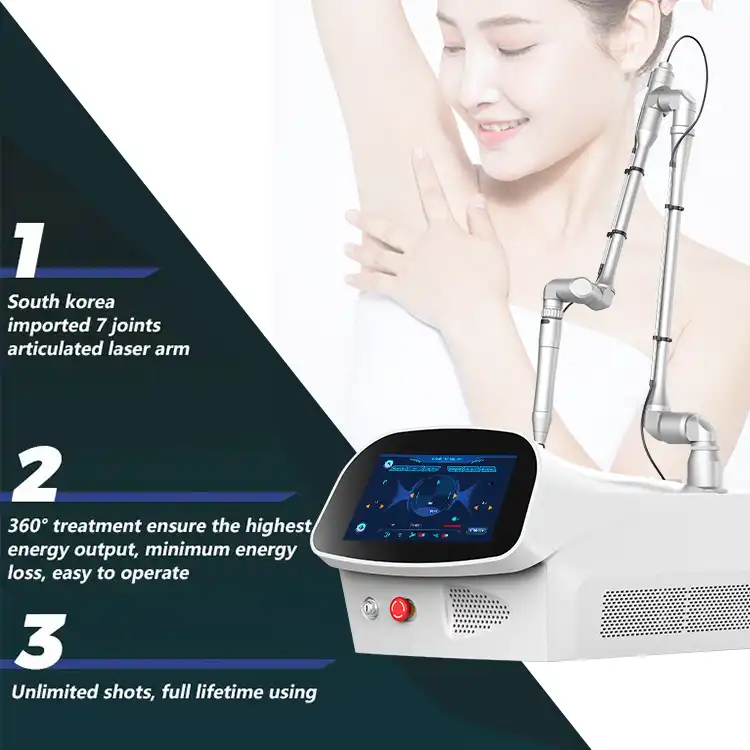
Wavelength and Absorption Characteristics
Nd Laser Wavelengths and Their Impact
Nd lasers, particularly the nd yag q switch laser machine, operate primarily at 1064 nm and 532 nm wavelengths. The 1064 nm wavelength penetrates deeper into the skin, making it effective for treating deeper pigmentation and larger tattoo particles. It's also less absorbed by melanin, making it safer for darker skin tones. The 532 nm wavelength, on the other hand, is more readily absorbed by superficial pigments and is excellent for treating red and orange tattoo inks.
Er Laser Wavelengths and Their Significance
Er lasers typically emit light at 2940 nm, which coincides with one of the peak absorption wavelengths of water. This characteristic allows Er lasers to vaporize water-containing tissue with extreme precision, making them ideal for superficial skin treatments. The high water absorption also means that the thermal damage to surrounding tissues is minimal, promoting faster healing.
Comparative Analysis of Absorption Patterns
The distinct absorption patterns of Nd and Er lasers significantly influence their applications. Nd lasers, with their deeper penetration and selective absorption by pigments, are superior for treatments requiring minimal epidermal damage, such as tattoo removal and treatment of deep pigmented lesions. Er lasers, with their high water absorption, excel in procedures requiring precise ablation of the epidermis, such as fine lines, wrinkles, and superficial scars.
Applications and Treatment Efficacy
Nd Laser Applications in Aesthetic Medicine
The versatility of nd yag q switch laser machine has made them indispensable in aesthetic medicine. They are particularly effective for:
- Tattoo removal across a wide range of colors
- Treatment of pigmented lesions like melasma and solar lentigines
- Vascular lesion treatment, including spider veins and port wine stains
- Hair removal, especially for darker skin types
The Q-switching technology in these machines allows for extremely short pulse durations, which effectively shatter pigment particles without causing excessive thermal damage to surrounding tissues.
Er Laser Applications in Dermatology
Er lasers have carved out a niche in dermatological procedures that require precise ablation of the skin's surface. Their applications include:
- Skin resurfacing for fine lines and wrinkles
- Treatment of superficial scars, including acne scars
- Removal of benign skin growths
- Improvement of skin texture and tone
The ability of Er lasers to vaporize tissue with minimal thermal damage allows for quicker healing times and reduced risk of post-inflammatory hyperpigmentation compared to more aggressive CO2 lasers.
Comparative Efficacy in Various Treatments
When comparing the efficacy of Nd and Er lasers, it's essential to consider the specific treatment goals. For pigmentation issues, especially those deeper in the skin or related to tattoos, Nd lasers, particularly Q-switched variants, often yield superior results. Their ability to target specific chromophores while sparing surrounding tissue makes them ideal for these applications. Er lasers, however, excel in treatments requiring precise removal of superficial skin layers. They are often the preferred choice for fine lines, shallow scars, and overall skin texture improvement due to their controlled ablation and minimal thermal damage to surrounding tissues.
Safety Considerations and Side Effects
Safety Profile of Nd Lasers
Nd lasers, including the nd yag q switch laser machine, are generally considered safe when used correctly. Their longer wavelengths penetrate deeper into the skin, which can be advantageous for certain treatments but also requires careful consideration of energy settings. The primary safety considerations include:
- Risk of hyperpigmentation or hypopigmentation, especially in darker skin types
- Potential for scarring if incorrect settings are used
- Eye safety concerns due to the invisible nature of the 1064 nm wavelength
Proper training and adherence to safety protocols are crucial when operating Nd lasers to minimize these risks.
Safety Profile of Er Lasers
Er lasers, with their high absorption in water, have a different safety profile:
- Lower risk of deep thermal damage due to superficial absorption
- Reduced risk of hyperpigmentation compared to more aggressive lasers
- Potential for prolonged erythema or crusting in the treated area
The precise ablation characteristics of Er lasers generally result in faster healing times and a lower risk of long-term side effects compared to deeper-penetrating lasers.
Comparative Analysis of Side Effects and Precautions
When comparing the side effects and necessary precautions between Nd and Er lasers, several factors come into play:
- Nd lasers typically require more robust eye protection due to their deeper penetration
- Er lasers may necessitate more careful post-treatment care to manage the ablated skin surface
- Both laser types require careful patient selection and customized treatment parameters to minimize risks
- Cooling systems are often more critical for Nd laser treatments to protect the epidermis
Understanding these differences is crucial for practitioners to ensure safe and effective treatments tailored to each patient's needs and skin type.
Conclusion
The choice between Nd and Er lasers depends on the specific treatment goals, patient characteristics, and desired outcomes. Nd lasers, especially Q-switched variants like the nd yag q switch laser machine, excel in targeting deep pigmentation and tattoos, while Er lasers are unparalleled for precise skin resurfacing. Both have their unique strengths, and a comprehensive understanding of their differences is essential for optimal treatment planning and patient care in aesthetic medicine. If you want to get more information about this product, you can contact us at susan@taibobeauty.com.
References
1. Anderson, R. R., & Parrish, J. A. (1983). Selective photothermolysis: precise microsurgery by selective absorption of pulsed radiation. Science, 220(4596), 524-527.
2. Alster, T. S., & Lupton, J. R. (2001). Erbium:YAG cutaneous laser resurfacing. Dermatologic Clinics, 19(3), 453-466.
3. Goldberg, D. J. (2008). Laser dermatology: Pearls and problems. Blackwell Publishing.
4. Tanzi, E. L., Lupton, J. R., & Alster, T. S. (2003). Lasers in dermatology: four decades of progress. Journal of the American Academy of Dermatology, 49(1), 1-31.
5. Ross, E. V., & Naseef, G. S. (2005). Comparison of carbon dioxide with erbium: YAG laser resurfacing: clinical and histologic evaluation. Dermatologic Surgery, 31(9), 1191-1201.
6. Kaufman, J. (2018). Lasers in dermatology: A review of principles and applications. Seminars in Cutaneous Medicine and Surgery, 37(3), 182-189.
YOU MAY LIKE













